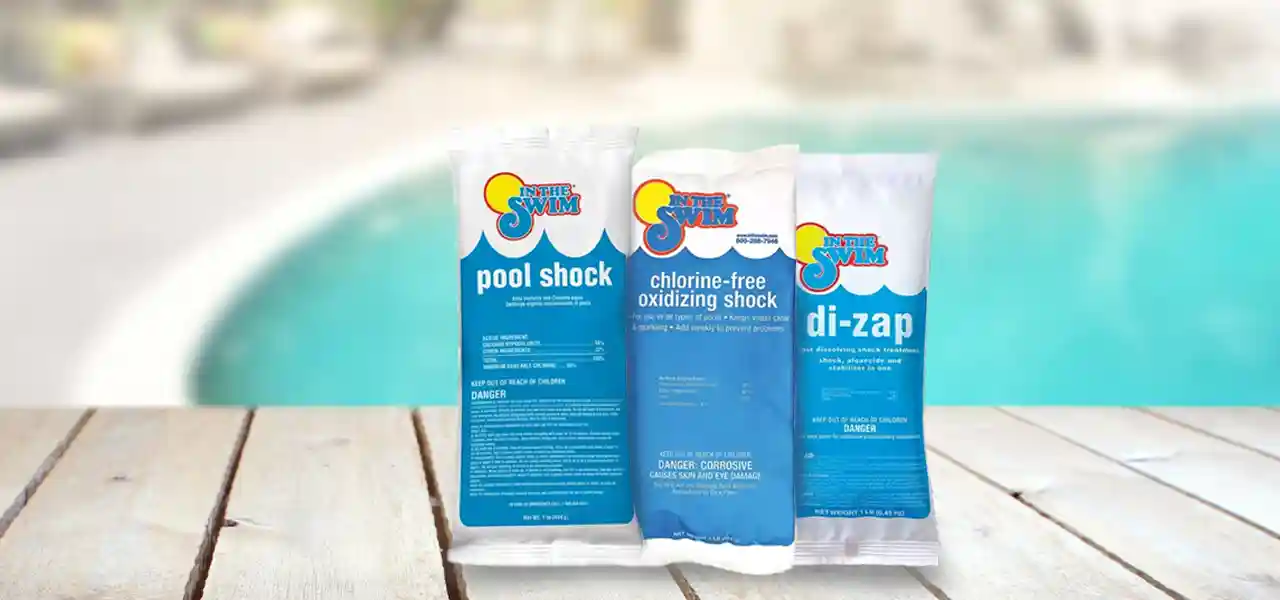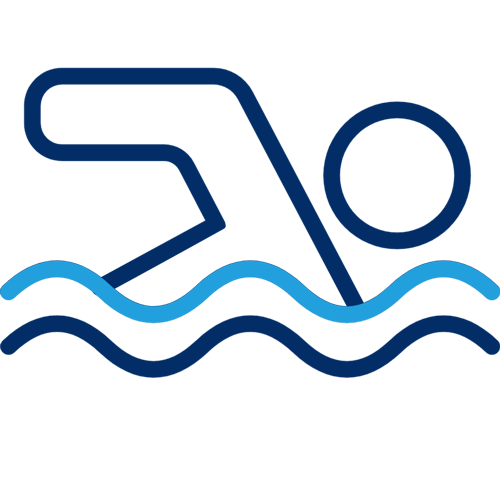FREE Standard Shipping On All Orders $100 or More!*

What's the Best Pool Shock for Your Pool?
Maintaining a pool requires more than just filtering water and balancing pH levels. To keep your pool clear, safe, and free from harmful bacteria or algae, regular shocking is essential. Pool shock adds a powerful dose of oxidizing agents, often in the form of chlorine or other compounds, to eliminate bacteria, algae, and other organic contaminants. However, not all pool shocks work the same, and choosing the right one for your specific pool is critical for achieving optimal results.
This article will guide you through the key considerations for selecting the best pool shock, when to shock your pool, and how to properly shock it.
When to Shock Your Pool
Shocking your pool is essential under certain conditions to maintain clean and balanced water. Here are a few situations when it’s necessary to shock your pool, including:

Heavy pool usage

After weather events

Treating algae
After Heavy Pool Use
When many people use the pool, they introduce more organic contaminants, such as sweat, body oils, lotions, and other residues, which can quickly deplete chlorine levels. Shocking the pool after such events is vital for eliminating these impurities and restoring sanitary water conditions.
After Rainstorms
Rain can introduce leaves, dirt, and other debris into your pool, as well as contaminants from the air and surrounding areas. Additionally, rainwater can dilute the chlorine concentration, making shock treatment necessary to restore proper sanitation.
When Chlorine Levels Drop
If your free chlorine levels fall below 1 ppm, it's a sign that your pool’s sanitation is compromised. This is often caused by high swimmer load, hot weather, or the accumulation of organic contaminants.
To Treat Algae
If you notice algae growing in your pool, this is a clear indication that chlorine levels are too low, and immediate shocking is required to kill the algae and prevent further spread.
After Opening and Before Closing Your Pool
When opening your pool for the season, it’s common for algae or bacteria to have grown during the off-season. A shock treatment ensures your pool starts clean and safe. Similarly, shocking before closing the pool helps ensure the water remains sanitary during the dormant months.
How to Shock Your Pool

Properly shocking your pool requires some preparation and knowledge to ensure the best results:
- Test your water first: Before adding shock, always test your pool water. The pH level should be between 7.2 and 7.6, as this range maximizes the effectiveness of chlorine shock. Low pH levels make chlorine more potent, while high pH reduces its efficiency. You should also check the chlorine levels to understand how much shock is needed.
- Choose the right shock: There are several types of pool shocks available, each suited for different needs. Choose the right type based on your pool's current condition and type, as outlined below.
- Shock at night: Sunlight degrades chlorine quickly. To prevent losing potency, it’s best to add shock in the evening or at night when the sun is down. This allows the shock to work overnight without being diminished by UV rays.
- Circulate your water: After adding shock, run your pool’s filtration system for at least 8-10 hours to distribute the chemicals evenly throughout the water. This helps prevent any "hot spots" of chlorine and ensures complete sanitation.
- Wait before swimming: If not using a chlorine-free shock, always wait until chlorine levels have returned to safe levels (between 1-3 ppm) before allowing anyone to swim in the pool. This can take several hours or up to a day, depending on the amount of shock added.
Types of Pool Shock
There are four primary types of pool shock, each suited for different pool types and conditions. Let’s look at each type in detail, along with the pool types they’re best suited for. Keep reading to learn more about the following shocks:
Calcium Hypochlorite Shock
Calcium hypochlorite shock, also known as cal-hypo shock, is one of the most common forms of pool shock. It delivers an impressive 68% available chlorine, making it one of the most potent types of shock on the market. Calcium hypochlorite rapidly oxidizes contaminants and effectively kills algae, bacteria, and other harmful pathogens.
Pool Suitability
Cal-hypo shock is ideal for chlorine-based pool systems, especially when dealing with algae blooms or bacteria outbreaks. It’s highly effective in clearing cloudy or murky water caused by heavy organic loads. However, it’s not recommended for saltwater pools or pools with already high calcium hardness levels, as it can contribute to calcium scaling. Additionally, because it doesn't contain Cyanuric Acid, it should be applied at night to avoid chlorine breakdown by the sun’s UV rays.
Best for:
- Pools with visible algae or bacteria growth
- Pools with heavy organic contamination
- Chlorine pools, not saltwater pools
Sodium Dichlor Shock
Sodium dichlor shock is a stabilized form of chlorine shock, meaning it contains Cyanuric Acid to protect chlorine from being destroyed by UV light. Dichlor shock provides 56% available chlorine and dissolves quickly, making it an excellent choice for regular maintenance and use during the day. In The Swim's Di-Zap shock contain dichlor shock, algaecide, and stabilizer, making it the perfect solution to an array of pool water problems.
Pool Suitability
Dichlor shock is perfect for saltwater pools, vinyl liner pools, and pools exposed to direct sunlight, as its stabilizer prevents rapid chlorine loss. This type of shock won’t increase calcium levels, making it safe for areas with hard water. However, repeated use of dichlor shock can lead to a buildup of cyanuric acid, which may require occasional dilution of the pool water to prevent chlorine lock, where chlorine becomes less effective.
Best for:
- Saltwater, vinyl-lined, fiberglass, or other pools with sensitive surfaces
- Pools exposed to sunlight for daytime shock treatment
Chlorine-Free Shock
Chlorine-free oxidizing shock uses potassium monopersulfate (MPS) as its active ingredient. Unlike chlorine-based shocks, chlorine-free shock doesn’t raise chlorine levels or contribute to chlorine buildup. It works by oxidizing contaminants like sweat, oils, and lotions, and is particularly effective at removing organic material that clouds the water.
Pool Suitability
Chlorine-free shock is great for pools with sensitive swimmers, such as those with children or people with skin sensitivities. It’s also beneficial in pools with high chlorine levels that still need oxidizing treatment without adding more chlorine. Since it won’t affect your pool’s chlorine levels, it’s an excellent choice for regular maintenance between chlorine shocks, keeping water clear and fresh. Plus, since there are no harsh chemicals, you can swim in just 15 minutes after adding chlorine-free shock to your pool!
Best for:
- Pools with sensitive swimmers
- Pools requiring regular maintenance without raising chlorine levels
- Pools with high chlorine levels needing extra oxidation
The best type of pool shock for your pool depends on your pool’s unique needs, water chemistry, and usage patterns. In The Swim offers a wide variety of shock treatments to suit different pool types and treatment requirements!